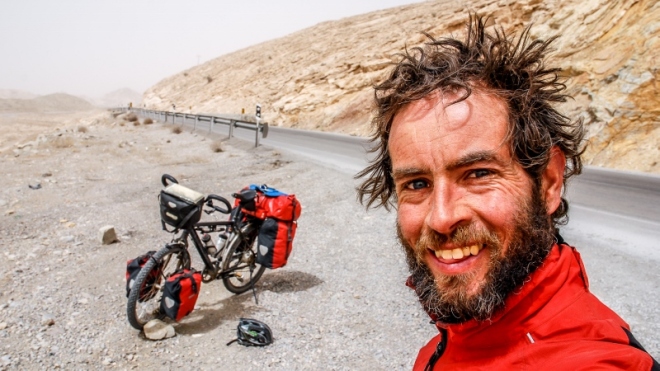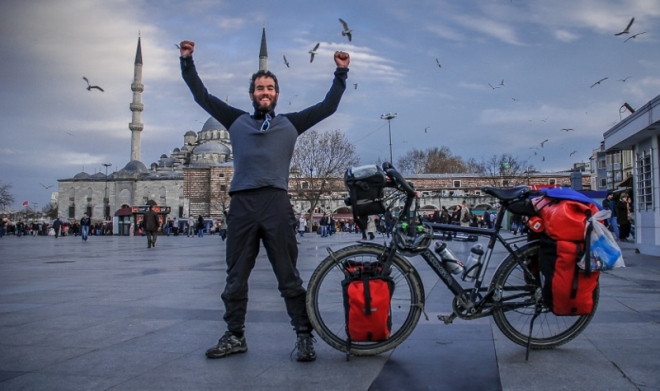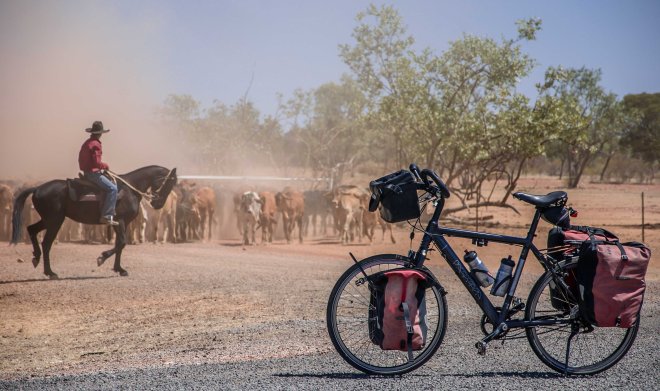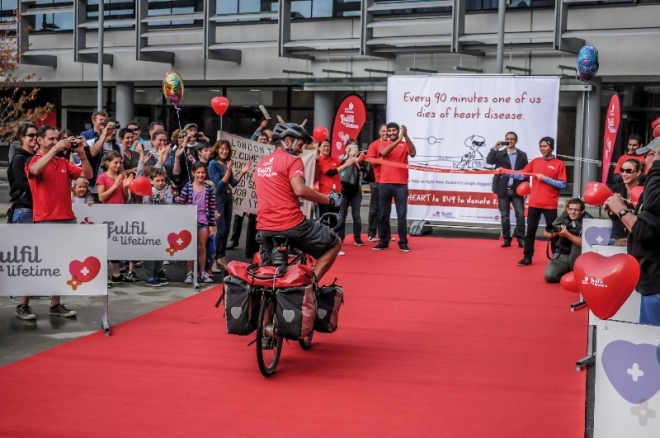
When Jeremy Scott was four years old, his parents told him he was going on holidays. They lied.
Unable to face telling their young son that he needed open heart surgery—a procedure that was still considered a ‘lottery’ in 1977—Jeremy’s parents chose instead to tell a little white lie.
The eldest son of Steve and Val, Jeremy was born with a hole in his heart.
“My parents noticed very quickly that something was wrong and that I was not a healthy baby; I was incredibly small as a child and always seemed to get sick,” he said.
Tests later revealed a congenital heart defect.
As Jeremy grew, the strain on his heart increased and he was unable to keep up with other kids his age.
“As soon as I started to exercise and my heart started working harder, I could not get enough blood to my arms or my legs. As a result, I was pretty hopeless as a child.”
The surgery didn’t just save Jeremy’s life, it changed it.
“I was able to play sports and live an incredibly active, healthy life,” he said.
“I also realised I was lucky having been through life changing surgery and set myself on a mission to make the most of my life.”
The boy who couldn’t run around a field would go on to cycle around the world.
Thirty years on from his surgery, and after a decade living in London where he worked as an architectural technician, Jeremy embarked on a cycling challenge that would push the outer limits of his determination—to ride from England to New Zealand.
“I came across a series of articles in TNT Magazine on people who had recently undertaken cycle tours in different corners of the world; one article talked about the incredible challenges involved in cycling the Australian Outback, the next described a couple’s cycling journey through the exotic back roads of South East Asia,” he said.
“I was struck by the images of the cyclists; they did not look like super athletes bursting with immense physical attributes, they looked … normal.”
For years, Jeremy had craved a challenge. And suddenly, he had found it.

Seven years after that initial seed was planted, Jeremy began a ride home which would take him more than two years and cover 50,000 kilometres.
He would visit 29 countries and, at times, fear for his life.
“The first few weeks were the hardest of the entire trip as I came to grips with the challenge I had set myself; I thought I had bitten off more than I could chew,” he said.
“I did a lot of research by reading Lonely Planets, travel blogs and other internet resources, but once I hit the road I realised local information was invaluable, so my planned route changed a lot.”
At the insistence of a pair of fellow travelers, he added South Korea to his route.
“It wasn’t even on my radar when I left London and it turned out to be quite a highlight,” Jeremy said.



However the trip wasn’t without its challenges—which included temperature variations of up to 90 degrees Celsius.
“The winter in the mountains of Eastern Turkey was the worst in 50 years; I was cycling in -20 degrees with overnight temperatures dropping to -40 degrees,” Jeremy said.
“Then the Taklamakan Desert in the West of China laid on plenty of sandstorms and saw temperatures soar to well over 50 degrees.
“Sumatra/Java was also incredibly tough as I rode for 18 punishing days without rest as I pushed on towards Bali to rendezvous with family.
“I rode in the heat and humidity with a debilitating stomach virus sapping my energy levels.”
He also had separate encounters with the Iranian and Filipino Mafia.
“I stopped in what appeared to be a fairly typical little truck stop restaurant in the middle of the desert to replenish my water supplies and found myself in a terrifying situation with the Iranian Mafia,” Jeremy said.
“They were dealing large quantities of drugs and taunted me with their firearms. As the situation deteriorated I found myself calmly and methodically working out how many of them I would need to kill if I was to see the light of day.
“I was adamant I would not go down without a fight.”
But despite the hardships, long days and the extreme weather conditions, it was the acts of kindness offered by strangers that will forever warm his heart.
“Some people seemed so poor in my eyes and appeared to have practically nothing yet they gave me, a complete stranger what they had. I quickly learnt that these kind people were incredibly rich in their own way,” Jeremy said.
Keen to ‘give back’ to those who had helped him as a child, Jeremy set himself an extra challenge for the trip—to raise money and awareness for the Heart Foundations in Australia, New Zealand and Britain.
“I was pretty laid back about it at the start, I figured that whatever I raised was better than nothing,” he said.
But his attitude changed following a chance meeting with a man, Warren Bowers, whose brother had been operated on by Sir Brian Barratt-Boyes—the surgeon who performed Jeremy’s open heart surgery.
“Sadly Warren’s brother Paul died during the operation. We discovered there were many lessons learnt from Paul’s death that had likely been carried forward to my operation just a few years later,” Jeremy said.
“At that point I realised how selfish I had been; I was raising money as a thank you for how my life had been changed but I needed to raise money and awareness to honour people like Warren and his family, who were not as fortunate as my family; as well as the families who had children still awaiting heart surgery.
“From that point I was far more focused and determined to raise awareness and funds.”

Once back in Australia, Jeremy set his sights on a new challenge—to write a book about his adventure.
“I barely had time to look out the window let alone ride my bike.”
Thankfully, he had kept a detailed record of his trip and the adventures and people he encountered along the way.
“Most solo long distance cyclists might read in the evenings, I wrote in excess of 1000 pages which made things so much easier when it came to writing my book,” he said.
“Writing the book was a bit of a blessing; I was nervous as to how I might readjust to living in the ‘real world’ once again after what I had just done.
“I launched myself wholeheartedly into writing the book as it filled that void which I feared.”
Jeremy’s book, The Long Road From A Broken Heart, is now available from jeremyscott.com.au with 10 per cent of every book sold donated to the New Zealand, Australian and British Heart Foundations, depending on where the book was sold.
“It is one thing to see the book pages on a computer screen but it is something entirely different to see, feel and smell a real book in my hands,” Jeremy said.
“Parents of children awaiting heart surgery said my story ‘from open heart surgery to round the world cyclist’ gave them far more hope for their sick child’s future than any words a surgeon could give them. Comments like that brought me to tears,” he said.
“I feel honoured to be able to support the Heart Foundations which continue help change the lives of thousands of people, just as my life was changed when I was a little boy.” 
Love it!!
LikeLike
Wow. Great pictures and even better story!
LikeLike
Thanks Lydia. Jeremy’s book is amazing!
LikeLike
Such an inspiring story.
LikeLike
This is an amazing story, I can only imagine what his book would be like. Travelling across that many countries is arduous for anyone, let alone doing it on a bicycle. Very inspiring. Thanks for joining in my #wednesdaywanderlust link party
LikeLike
What an inspirational story
LikeLike
What an absolutely incredible story x
LikeLike
I know Sonia! He is pretty amazing. X
LikeLike
Wow what a great story! I was a bit worried clicking on a link about a broken heart! So I am glad it was such a happy story!
LikeLike
Thanks Kelly! It was a bit sneaky in that way but mostly link to his book so I’m really chuffed you read it!
LikeLike
Reblogged this on iamhinVN and commented:
So great. I respect to you. A guy i met at Mường Chà, Điện Biên province, early 2013.
LikeLike
So not what I was expecting from the title… yet so incredibly awesome! Thanks so much for sharing Jeremy’s story.
LikeLike
Thanks Sonia! He’s a pretty amazing adventurer so I’m lucky I got to share it. And his photos in the book are amazing.
LikeLike